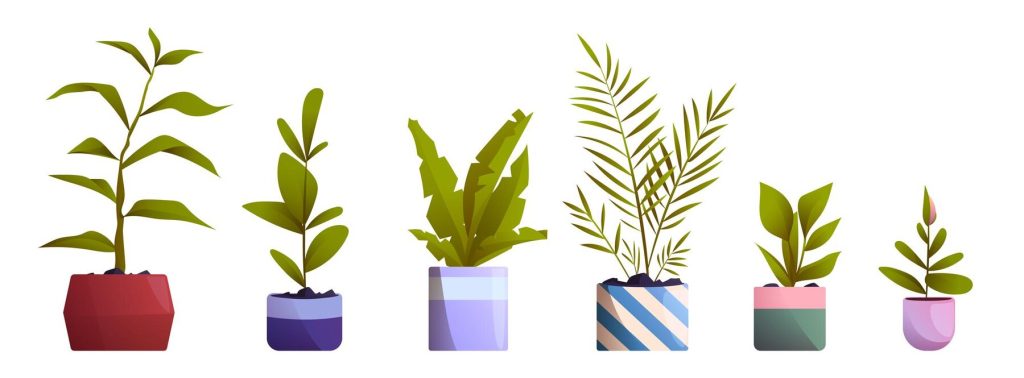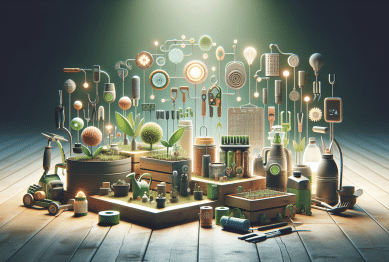Houseplants are more than just decoration—they bring life and freshness into a room, help purify the air, and offer a therapeutic way to reconnect with nature. However, despite their benefits, taking care of plants can feel overwhelming, especially for beginners. With so many types of plants, watering schedules, and environmental factors to consider, it’s easy to feel like you need a degree in botany to be successful.
The good news is that houseplant care doesn’t have to be complicated. With the right mindset and a few key tips, even the most novice gardeners can build a thriving plant collection. Whether you’re trying to turn your phone time into learning time without pressure or simply looking for ways to enhance your living space, here are some easy houseplant care tips anyone can master.

1. Start with the Right Plant
For beginners, choosing a plant that’s forgiving and easy to care for is essential. Some plants are more resilient than others and can thrive even if you’re not yet an expert.
- Best choices for beginners:
- Snake Plant: Known for its tolerance of low light and infrequent watering.
- ZZ Plant: Can handle neglect and low light conditions.
- Pothos: A fast-growing plant that’s very forgiving when it comes to water and light.
- Spider Plant: Very easy to propagate and care for, ideal for first-time plant owners.
Tip: Start with a few easy-to-care-for plants and gradually expand your collection as you gain confidence.
2. Learn the Basics of Watering
Overwatering is a common mistake among new plant owners. While it’s easy to assume that plants need to be watered frequently, most houseplants prefer to dry out a bit between waterings. The key is to find the right balance.
- How to Water:
- Check the top 1-2 inches of soil. If it feels dry, it’s time to water.
- Use a well-draining pot to avoid water accumulation at the bottom.
- Always water the soil directly, not the leaves, to prevent mold and rot.
Tip: Set a reminder on your phone for a weekly water check, but avoid over-watering by resisting the urge to water too frequently.
3. Understand Light Requirements
Light is one of the most crucial factors in keeping houseplants healthy. While some plants thrive in direct sunlight, others prefer indirect or low light conditions. Understanding your plant’s light needs will help it thrive and reduce stress on both you and the plant.
- Light requirements for common houseplants:
- Low light: Snake plant, ZZ plant, pothos.
- Medium light: Peace lily, spider plant, philodendron.
- High light: Succulents, cacti, and most flowering plants.
Tip: Place plants near windows with natural light, but avoid direct sunlight for plants that prefer shade. If your space doesn’t have enough natural light, consider investing in a grow light.
4. Don’t Overcomplicate Fertilizing
Fertilizing can be tricky, but it doesn’t have to be. Most houseplants benefit from being fed during their growing season (typically spring and summer). However, fertilizing too often can do more harm than good.
- How to fertilize:
- Use a balanced, water-soluble fertilizer diluted to half-strength.
- Apply once a month during the growing season.
- Don’t fertilize during the dormant season (fall and winter), as most plants don’t need extra nutrients at this time.
Tip: Set an annual reminder on your phone for fertilizing, to ensure that you’re not over-fertilizing or underfeeding your plants.
5. Keep an Eye on Pests
While pests are a natural part of plant care, they don’t have to be a major problem. By keeping a close eye on your plants, you can prevent infestations before they get out of control.
- Signs of pests to look out for:
- Small holes in the leaves.
- Webbing on the plant (common with spider mites).
- Yellowing leaves or sticky residue.
Tip: Regularly check your plants for signs of pests, especially during the growing season. If you spot any, gently wipe the leaves with a damp cloth or use natural pest control methods like neem oil.
6. Repot When Necessary
Over time, your houseplants may outgrow their pots, leading to root-bound conditions that can stunt their growth. Repotting allows the roots to spread out and promotes healthier plant growth.
- When to repot:
- Roots are growing out of the drainage holes.
- The plant is top-heavy and easy to tip over.
- The soil isn’t draining well.
Tip: Choose a pot that is 1-2 inches larger in diameter than the current one. Repot during the spring or early summer, when your plant is actively growing.
7. Take Time to Enjoy Your Plants
While houseplant care can sometimes feel like a chore, it’s important to take a step back and enjoy the process. Regularly check in with your plants, admire their growth, and treat them like part of your home. Caring for plants can also serve as a calming, meditative break from screen time, allowing you to connect with nature and reduce stress.
- Ways to enjoy your plants:
- Create a dedicated plant corner where you can relax and unwind.
- Spend time observing their growth and changing shapes.
- Take photos and track their progress over time.
Tip: Turn your phone time into a relaxing plant-checking routine. Use apps or photo journaling to document their growth without the pressure of overanalyzing.
Final Thought
Caring for houseplants doesn’t have to be intimidating or stressful. By following these easy care tips, even beginners can become confident plant owners. The key is to start with a few low-maintenance plants, understand the basics of light, water, and pests, and enjoy the process. Soon enough, your home will be filled with thriving, healthy plants—and you’ll have mastered the art of easy houseplant care.
If you’re looking for even more in-depth guidance on houseplant care, the University of Vermont Extension provides an excellent resource for beginners.
As you begin caring for your houseplants, one of the most important steps is to choose the right plant for your environment. Some plants, like the snake plant or pothos, are perfect for beginners and can thrive in lower light conditions. For more information on how to select the best plants for your home, refer to our guide on low-maintenance houseplants
References
The Spruce – How to Care for Houseplants:
A comprehensive guide on basic houseplant care, including watering, light requirements, and common beginner mistakes.
How to Care for Houseplants
Gardening Know How – Houseplant Care Tips for Beginners:
This resource provides a beginner’s guide to caring for houseplants, focusing on watering, light, and avoiding common problems.
Houseplant Care Tips for Beginners
Better Homes & Gardens – Houseplant Care 101:
Tips for choosing the right plants, caring for them, and troubleshooting common issues like pests and overwatering.
Houseplant Care 101
University of Vermont Extension – Houseplant Care:
A trusted resource for understanding the science behind houseplant care, including light, water, and pest management.
Houseplant Care
The Sill – Beginner’s Guide to Houseplant Care:
A beginner-friendly guide offering essential tips for growing and maintaining houseplants in the home.
Beginner’s Guide to Houseplant Care
Plant Care Today – Common Houseplant Problems:
Detailed information about common plant problems like pests, diseases, and overwatering, along with solutions.
Common Houseplant Problems
Healthline – How to Improve Air Quality with Houseplants:
An article discussing how houseplants can purify indoor air and contribute to a healthier living environment.
How to Improve Air Quality with Houseplants
The New York Times – Houseplant Trends 2023:
A look at the latest trends in houseplant care and the types of plants gaining popularity among enthusiasts.
Houseplant Trends 2023
HuffPost – The Benefits of Houseplants for Mental Health:
This article explores how caring for plants can improve mental well-being, reduce stress, and enhance productivity.
The Benefits of Houseplants for Mental Health









